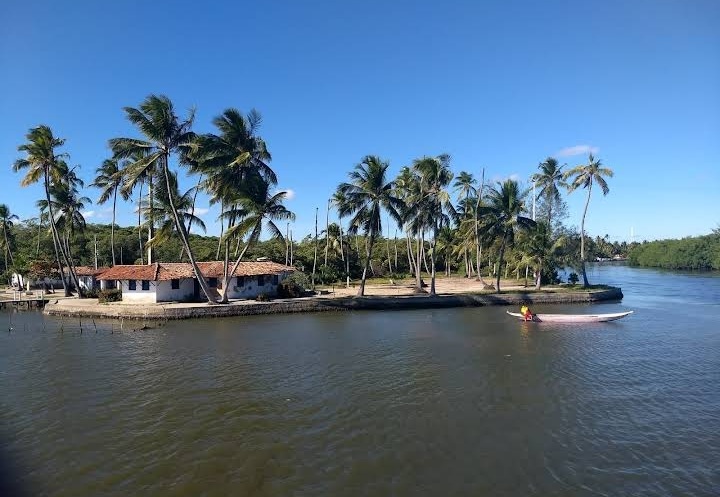
Experience the vibrant São João Festivities in Maceió, where colorful dances, traditional music, and rich local flavors come together in a celebration of northeastern Brazil’s cultural heart. Discover how to make the most of this lively event with practical tips and immersive insight.
Stay Hydrated Under the Alagoas Sun
São João festivities can stretch from midday through late evening in humid conditions. Carry a reusable water bottle and drink regularly.
Dress for Warm Weather and Crowds
Light, breathable clothing and comfortable shoes are a must for moving through packed event areas—avoid restrictive footwear.
Use Rideshares Over Driving
Traffic congestion is common near major festivity sites. Opt for taxis or ridesharing services to avoid parking hassles and delays.
Plan for Evening Celebrations
Most events spike after sunset with bonfires and dancing. Schedule accommodations nearby to easily return once festivities wind down.
São João Festivities in Maceió: A Lively Celebration of Culture and Tradition
Every June, Maceió, Alagoas, pulses with the unmistakable rhythm of the São João Festivities — a vibrant showcase of northeastern Brazil’s rich culture and time-honored traditions. Streets and squares transform into lively arenas where bright decorations sway with the festive breeze, and the aroma of regional dishes like pamonha and canjica fills the air. The city’s heartbeat is found in the junina dances and the piercing strains of zabumba drums as revelers don colorful costumes and join in quadrilhas, the traditional group dances.
The festivities span several weeks, offering visitors both immersive cultural encounters and practical considerations for participation. Events typically kick off on June 12 and run through the end of the month, aligning with the feast days of St. Anthony, St. John, and St. Peter. Maceió’s warm climate means light clothing and hydration are essentials for day and night celebrations alike.
Public squares such as Praça Centenário and Pontal da Barra become hubs of activity. Here, locals and tourists alike gather around towering bonfires—natural lighthouses of the night—where finger foods cooked over open flames invite casual mingling. You’ll hear the lively call of forró music, the soundtrack that pulls everyone onto the dance floor, its accordion and triangle daring even the most reserved guests to move.
Planning ahead enhances the experience: arrive early to snag premium viewing spots or secure entry tickets for special events like live concerts or folk play reenactments. Transportation can be heavy due to crowds; prioritize local taxis or rideshare apps and avoid parking difficulties. For accommodations, staying near the Ponta Verde or Pajuçara neighborhoods ensures quick access to major festivity sites while offering peaceful retreats after the energy-filled nights.
Beyond the events, São João invites attendees to engage all senses. The crackling of firewood interplays with laughter, the scent of coconut sweets blends with earthy grilled meats, and the colors of paper lanterns compete with the night sky's constellations. The festival is a lived, breathing entity — fiercely itself, challenging visitors to respect and celebrate its deep-rooted customs.
Whether you're here for casual enjoyment or cultural immersion, these celebrations offer a pragmatic adventure: vibrant but navigable, spirited but organized. Dress light, pace yourself, and dive in with curiosity and respect. São João in Maceió promises not only a party but a genuine encounter with Brazil’s northern soul.
Nearby Trips
All Adventures
Boat Charters
Water Activities
Adventures near Maceió, Alagoas
Discover the unique and memorable adventures that make Maceió, Alagoas special.
Frequently Asked Questions
What is the historical significance of São João in Maceió?
São João celebrates St. John the Baptist and reflects regional agricultural cycles. It honors rural life with traditional forró music, folk dances, and food rooted in northern Brazil's history.
Are the São João events family-friendly?
Yes. Many public celebrations welcome families with children’s activities, safe public spaces, and food options suited to all ages.
What transportation options are best during the festival?
Given heavy traffic and limited parking, rideshare apps and taxis are recommended. Walking is often the quickest way between nearby venues.
Are there any lesser-known local traditions within the festival?
Yes. Some local communities perform 'pau de sebo' (greased pole climbing) and traditional folk plays mimicking local legends, mostly held off the main tourist circuits.
Can I try typical São João food at the festival?
Absolutely. You’ll find vendors serving pamonha (corn paste wrapped in leaves), canjica (sweet corn dish), and freshly grilled meats cooked over the bonfires.
Is it safe to participate in night festivities?
Maceió’s São João events are generally safe with a strong police presence. Stay aware of your belongings and travel with a group when possible.
Recommended Gear
Reusable Water Bottle
Keeping hydrated during lengthy outdoor festivities is critical.
Comfortable Walking Shoes
You'll spend hours on your feet navigating party sites and uneven grounds.
Lightweight Rain Jacket
Expect sudden tropical showers during the evening—pack light but protective gear.
Portable Phone Charger
Capture memories and use GPS or rideshare apps without worry of battery drain.
Local Insights
Hidden Gems
- "Pontal da Barra beach at dawn offers quiet views away from festival crowds."
- "Small neighborhood quadrilhas in Jaraguá provide more intimate, authentic local experiences."
Wildlife
- "Migratory birds occasionally seen near festival sites in Pajuçara Lagoon."
- "Urban bats emerge around the bonfires, a natural part of the evening atmosphere."
History
"São João in Maceió traces back to colonial and indigenous syncretism, celebrating both harvest cycles and Catholic saints, embedding deep cultural identity especially in rural communities around Alagoas."
